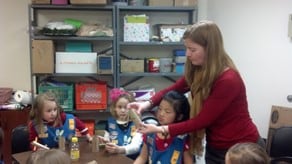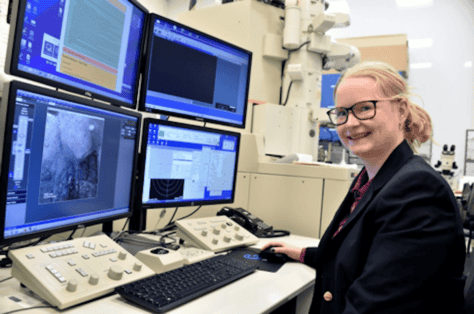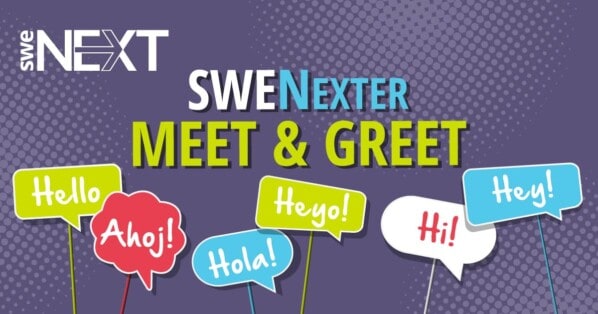If you’ve ever attended a WE Conference, you may have heard delightful screams of “Epic Fail!” emanating from the Invent It Build It annual outreach event for middle school-aged girls. If you are not familiar, it goes something like this: as the girls are working through their design challenge, they are instructed to yell “Epic Fail” any time their design doesn’t go as planned during planning, prototyping, or testing. The remainder of the room responds with exuberant clapping and celebratory chants any time those magic words are heard. The idea is to change the mindset and language surrounding failure to encourage a more positive response to and outcome from the failure. Because learning from failure is a critical component of the engineering design process and a valuable life skill, it is important that we teach our children to be resilient when facing the unexpected rather than to be ashamed in the face of failure.
This can start by reframing the language we use to discuss failure with children. Scientists have proven that changing a single word in the communication of an idea or failure can create a more positive outlook (a good example is replacing the word problem with challenge or opportunity in our everyday vocabulary). This idea is explored in this TED Talk. Although creating more positive conversations surrounding failure is a start, it is also key to teach children actionable tools to deal with failure at a young age. Teaching children iterative approaches to problem solving can help develop a strong sense of resilience in all aspects of a child’s academic, social, and emotional growth.
This month, we asked SWE members to provide advice on how to better embrace failure for children and encourage others to support failures as learning opportunities:
 Christa Downey
Christa Downey
Cornell Engineering Career Center Director
Children are born explorers. They are curious and eager to learn. By encouraging this curiosity and exploring with them, we are setting an example about learning and growth. By encouraging and demonstrating innovation and accepting unexpected results, we can teach children how to learn and grow from their experiences. We need to eliminate failure from our vocabulary when talking with children and focus instead on how we might adjust our approach to reach our desired outcomes. It’s also important that we allow children to set their own expectations for themselves, certainly providing guidance along the way, but to be careful about the assumptions and expectations we impose on them.
 Sahara Becker
Sahara Becker
SWE Outreach Publications Workgroup Lead
Learning from failure is integral to the engineering design process and a key life skill, so it’s important that we model a growth mindset for kids. Failure happens all the time and unfortunately, for many of us, our natural reaction is to back down so that we don’t fail again. Instead, we need to take these failures as an opportunity for reflection that helps inform how we can get closer to success on our next try. Parents, educators, and outreach volunteers can help model this behavior in front of kids. For example, when trying out a new bread recipe at home with your kids that didn’t rise quite right, have a conversation with your kids and brainstorm reasons it didn’t rise and come up with ideas for changes you can make next time you try the recipe. As an outreach practitioner, I like to host “Mythbusters Day” events where, in addition to activities that work as expected, I purposefully include experiments that I know will fail so that we can do this reflection as a group.
 Heidi Balestrieri
Heidi Balestrieri
SWE Wisconsin VP Outreach
I choose hands-on STEM activities with no “right answer”. Activities that encourage creativity and without preset steps give kids the opportunity to fail and improve their bridge, carrier, car, tower, etc. after a redesign. When something doesn’t go well and there isn’t time or resources for a redesign, we talk through what didn’t go well and what they would have liked to change (with unlimited time & resources). I follow up with personal experiences from work of first designs not working and needing to redo my work and famous examples of redesigns or flops that turned out to be good failures (Post-it Notes is a good example). Normalizing failure and turning it into a positive is key. The best results I’ve seen from design challenges are second or third attempts. We can all improve.
Like this content? Sign up as an Adult Advocate to receive the monthly Advocacy Newsletter to get STEM education and outreach related content delivered to your inbox.
Related Content:
- Adult Advocate’s Avenue: How We Can Outreach to Those With Limited Access to Technology
- Adult Advocate’s Avenue: Engaging Parents, Guardians, and Educators in Outreach Events
- Adult Advocate’s Avenue: Teaching Kids to be Active Champions Against Biases
Author
-

SWE Blog provides up-to-date information and news about the Society and how our members are making a difference every day. You’ll find stories about SWE members, engineering, technology, and other STEM-related topics.






